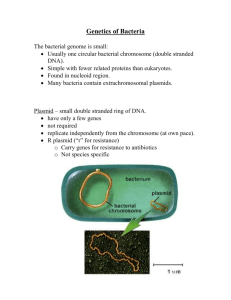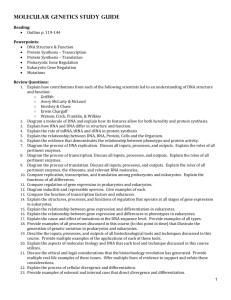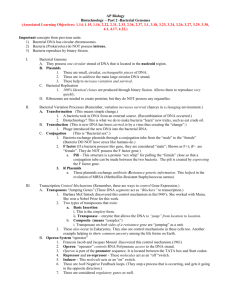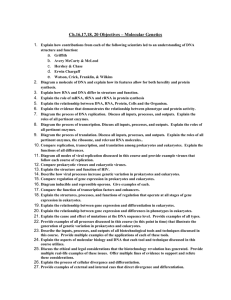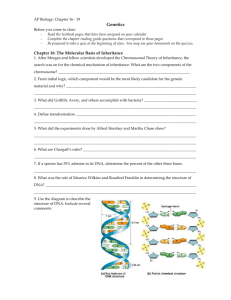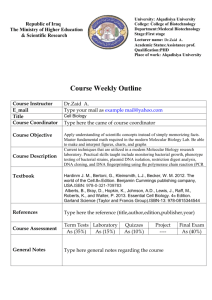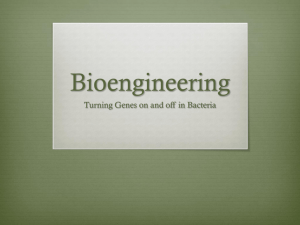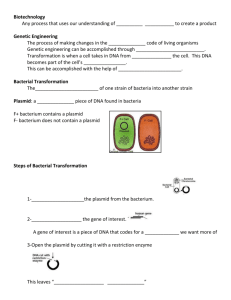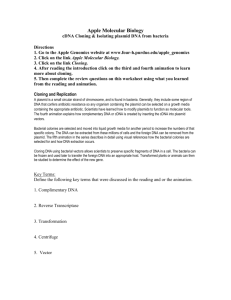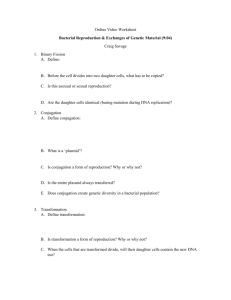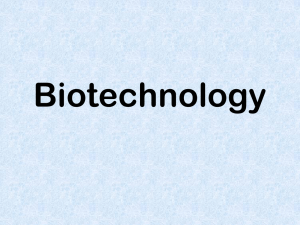Molecular Biology Group Review
advertisement
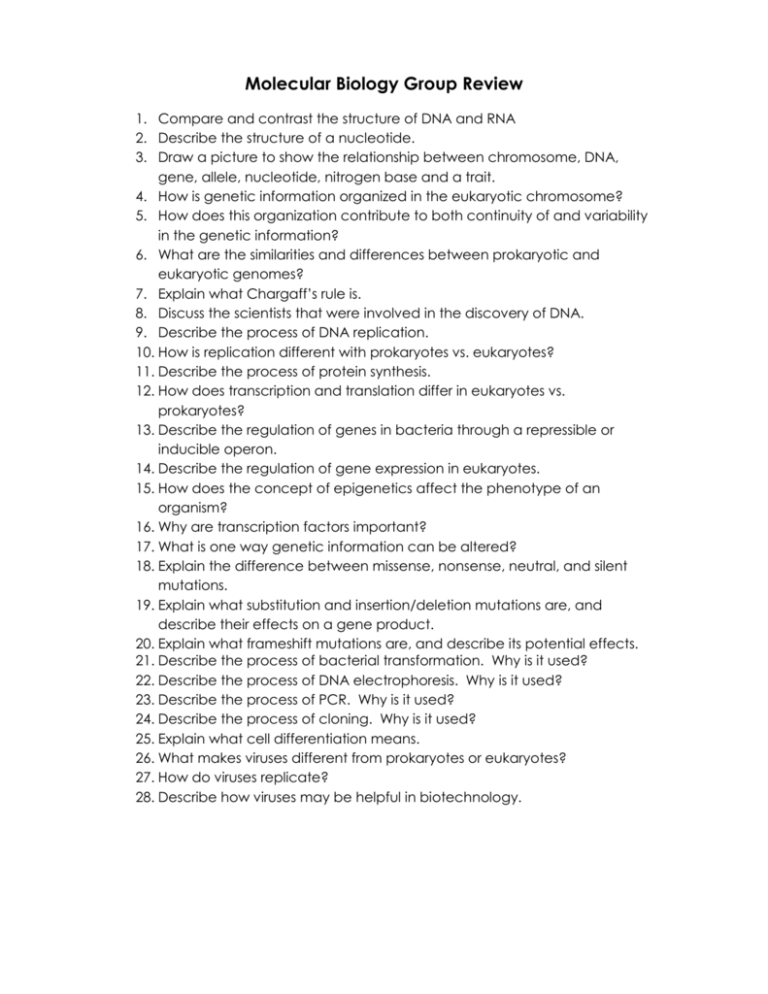
Molecular Biology Group Review 1. Compare and contrast the structure of DNA and RNA 2. Describe the structure of a nucleotide. 3. Draw a picture to show the relationship between chromosome, DNA, gene, allele, nucleotide, nitrogen base and a trait. 4. How is genetic information organized in the eukaryotic chromosome? 5. How does this organization contribute to both continuity of and variability in the genetic information? 6. What are the similarities and differences between prokaryotic and eukaryotic genomes? 7. Explain what Chargaff’s rule is. 8. Discuss the scientists that were involved in the discovery of DNA. 9. Describe the process of DNA replication. 10. How is replication different with prokaryotes vs. eukaryotes? 11. Describe the process of protein synthesis. 12. How does transcription and translation differ in eukaryotes vs. prokaryotes? 13. Describe the regulation of genes in bacteria through a repressible or inducible operon. 14. Describe the regulation of gene expression in eukaryotes. 15. How does the concept of epigenetics affect the phenotype of an organism? 16. Why are transcription factors important? 17. What is one way genetic information can be altered? 18. Explain the difference between missense, nonsense, neutral, and silent mutations. 19. Explain what substitution and insertion/deletion mutations are, and describe their effects on a gene product. 20. Explain what frameshift mutations are, and describe its potential effects. 21. Describe the process of bacterial transformation. Why is it used? 22. Describe the process of DNA electrophoresis. Why is it used? 23. Describe the process of PCR. Why is it used? 24. Describe the process of cloning. Why is it used? 25. Explain what cell differentiation means. 26. What makes viruses different from prokaryotes or eukaryotes? 27. How do viruses replicate? 28. Describe how viruses may be helpful in biotechnology. Refer to an experiment that was performed to separate DNA fragments from four samples radioactively labeled with 32P. The fragments were separated by gel electrophoresis. The visualized bands are illustrated in the figure below. 29. The electrophoretic separation of the pieces of DNA in each of the four samples was achieved because of differential migration of the DNA fragments in an electric field. What is causing the differential migration of the pieces? A scientist is using an ampicillin-sensitive strain of bacteria that cannot use lactose because it has a nonfunctional gene in the lac operon. She has two plasmids. One contains a functional copy of the affected gene of the lac operon, and the other contains the gene for ampicillin resistance. Using restriction enzymes and DNA ligase, she forms a recombinant plasmid containing both genes. She then adds a high concentration of the plasmid to a tube of the bacteria in a medium for bacterial growth that contains glucose as the only energy source. This tube (+) and a control tube (-) with similar bacteria but no plasmid are both incubated under the appropriate conditions for growth and plasmid uptake. The scientist then spreads a sample of each bacterial culture (+ and -) on each of the three types of plates indicated below. 30. If no new mutations occur, it would be most reasonable to expect bacterial growth on which of the following plates? 31. The scientist used restriction enzymes for what purpose in the experiment? 32. If the scientist had forgotten to use DNA ligase during the preparation of the recombinant plasmid, bacterial growth would most likely have occurred on which of the following?



